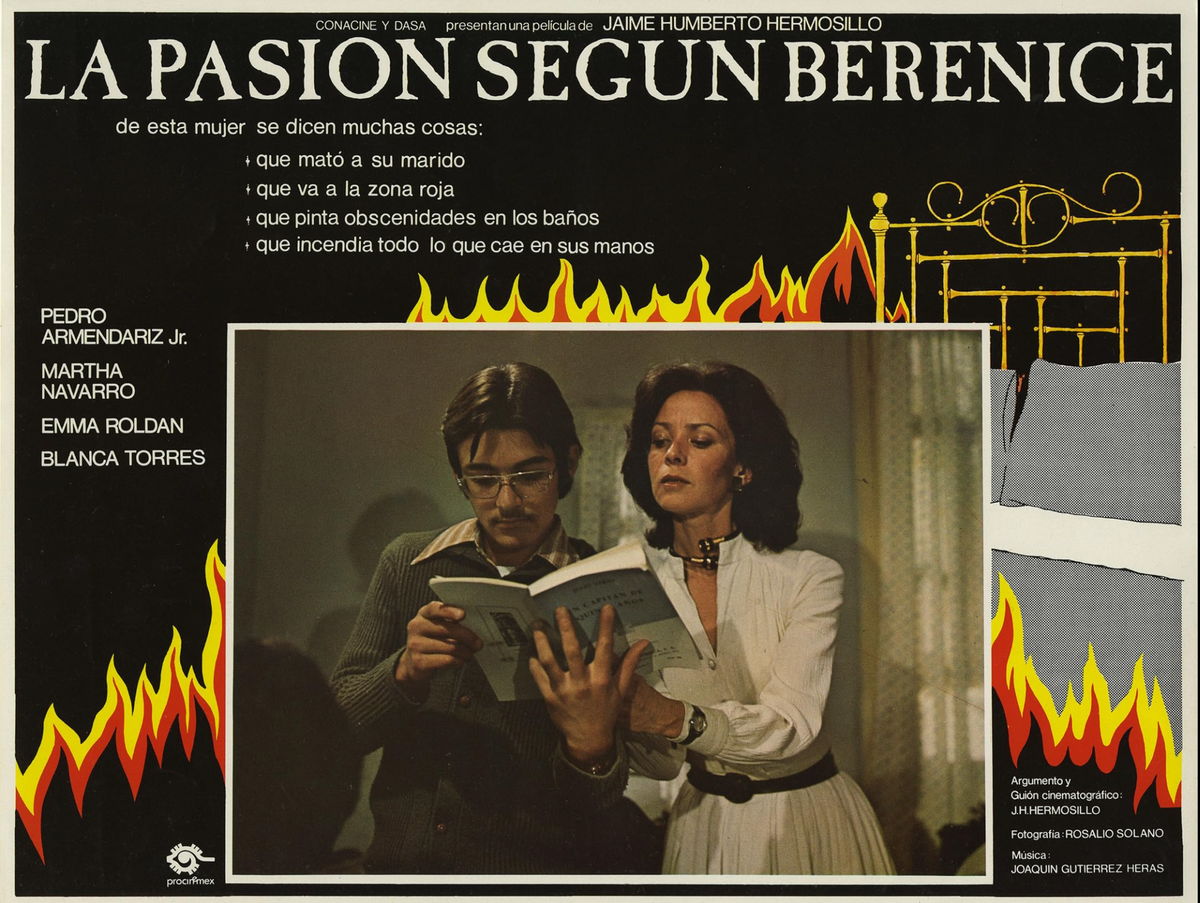National Mexican Cinema Day: Celebrating La pasión según Berenice (The Passion of Berenice)

Many Slavs grew up watching Mexican dramas. My friend Ana from Nin, for example, knows some Spanish thanks to her teenage years spent with her grandma watching telenovelas—just like in Mexico, every day after school. Over the last few decades, telenovelas became one of Mexico's biggest cultural exports to Eastern Europe. I often share happy chuckles with my Croatian family when we recall the emotive acting style of Mexican actresses and actors.
Framed within the context of the seventh art, I want to pay my respects to the Día Nacional del Cine Mexicano (National Mexican Cinema Day), which was celebrated on August 15th. I believe this is an excellent opportunity to explore the films that my home country has to offer.
August 15th serves as a recognition of the invaluable legacy and contribution of film production to Mexican culture, reflecting and expressing our national identity, traditions, and taboos. This text will deal with a film that addresses a widely spread cultural taboo: the widow who still feels. Naming something is a way of giving it existence. And certain topics must be named more than once.
The film La pasión según Berenice (1976) is a standout piece of Mexican cinema directed by Jaime Humberto Hermosillo, a filmmaker renowned for his ability to explore the complexities and hidden layers of Mexican society. Nowadays, the film is available at the Internet Archive. This intimate drama centres on the life of Berenice, portrayed with remarkable depth by Martha Navarro, a woman caught between societal expectations and her own repressed desires.
Set in the city of Aguascalientes, La pasión según Berenice tells the story of Berenice, a middle-aged widow who lives a seemingly quiet and reserved life with her godmother Josefina (Emma Roldán). In a time and place where being an independent and single woman was not well-regarded by society, Berenice works as a teacher at a commercial academy and cares for her godmother, who seems to be ill and close to death. However, the dullness of her existence is disrupted when she meets Rodrigo (Pedro Armendáriz Jr.), the son of her godmother’s doctor, who stirs within her long-suppressed passions.
The film skillfully captures the essence of conservative and traditional Mexico, where appearances and societal norms dominate individual lives. The haunting score echoes Berenice’s internal turmoil, while the intimate cinematography reflects her physical and emotional confinement. Rodrigo, in one scene, hints at the gossip surrounding Berenice: "It is said you killed your husband. And that you go to the red areas with your face covered by a mysterious veil."
Martha Navarro’s performance is undoubtedly one of the film’s most powerful elements. She embodies the complexity of Berenice—a character who is both vulnerable and resolute, even malicious at moments, shackled by her circumstances but burning with an inner fire. Pedro Armendáriz Jr. also delivers a compelling portrayal as the object of Berenice’s longing, a man navigating his own conflicts between desire and societal obligations.
This film reflects on forbidden desires, the societal constraints that stifle them, and the internal battle of a woman seeking to break free from her invisible chains. The careful storytelling and unforgettable performances make this movie a timeless work, resonating as strongly today as it did when it was first released, 48 years ago.
The invaluable legacy and contribution of Mexican cinema to our culture is undeniable. La pasión según Berenice is a testament to Mexican talent and the ability to address universal themes with unique sensitivity. Have you experienced this cinematic gem yet?



